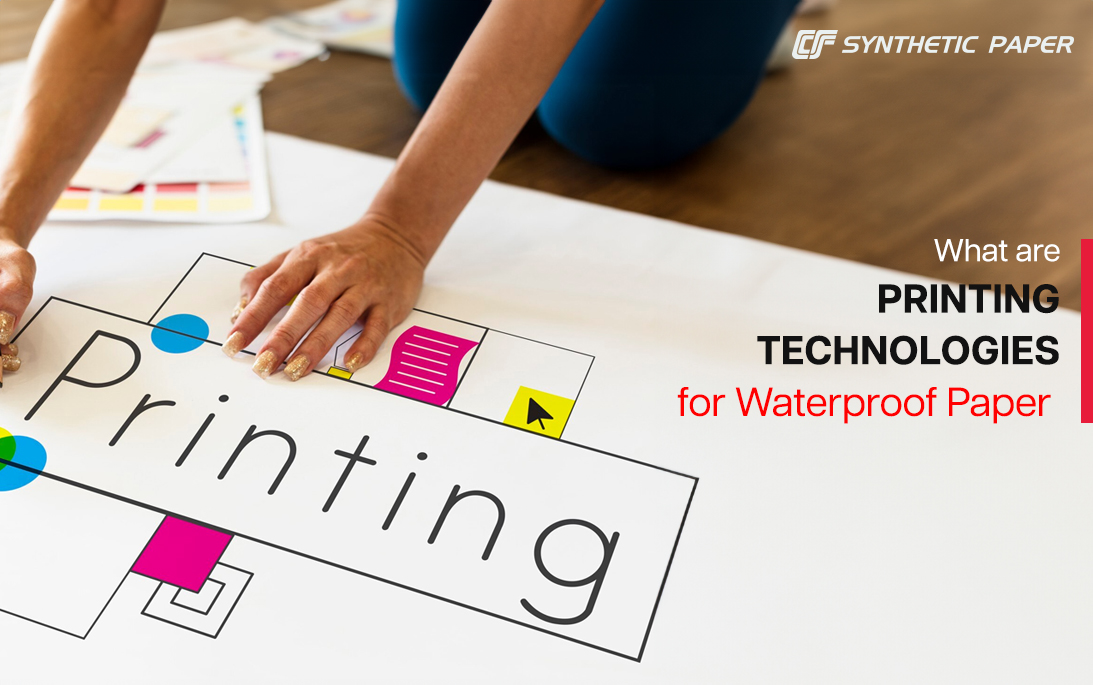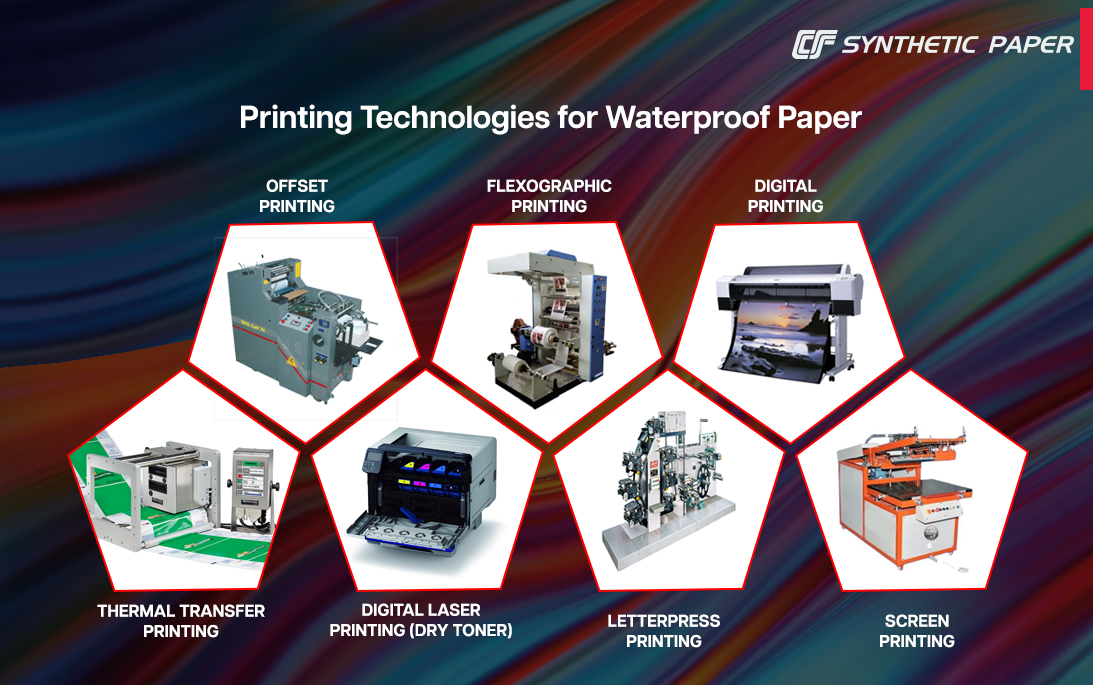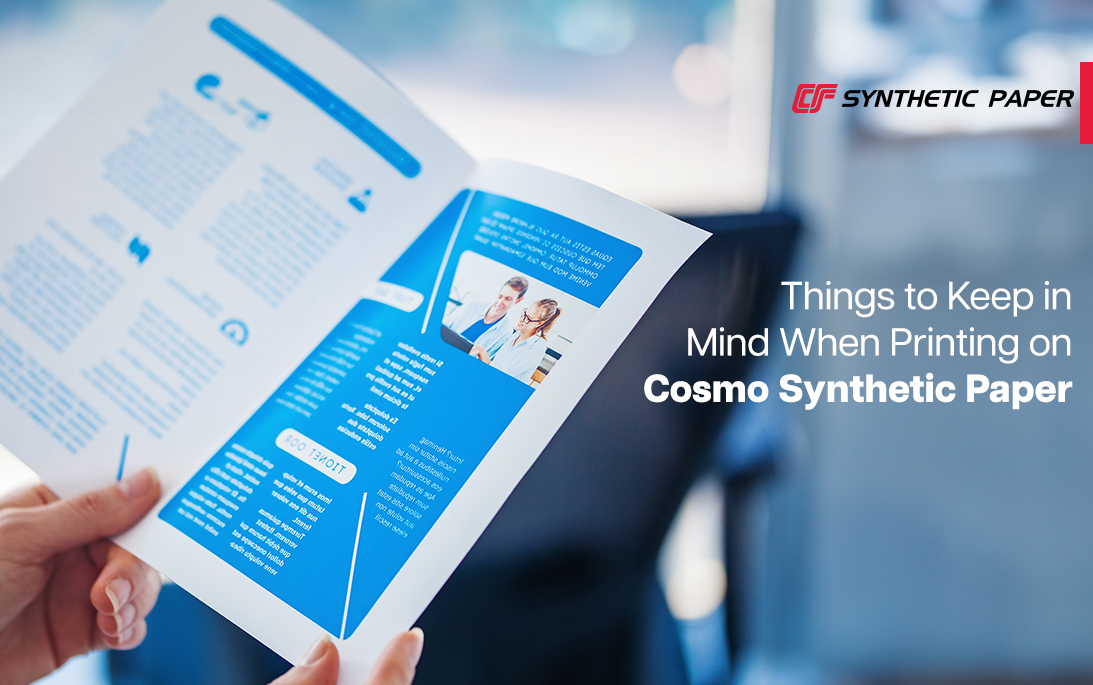
What Are the Printing Technologies for Waterproof Paper
A moisture resistant paper that can withstand rain and spills, provides crisp and clear prints, and is completely waterproof. Now that is Cosmo Synthetic Paper. This innovative waterproof solution resembles traditional paper and is used in numerous industries today. Its ability to resist water opens many possibilities for industries looking forward to using synthetic paper.
However, this paper requires specialized printing technologies that ensure durability, clarity, and longevity for the printed material. Let's read ahead and learn about the key printing technologies employed for printing on Cosmo Synthetic Paper's waterproof paper.
Engineered by industry experts, waterproof paper by Cosmo Synthetic Paper is one of the best replacements for pulp-based paper. Our synthetic paper is the first choice of businesses today because of its non-tearability, water-moisture-chemical resistance paper, and excellent printability. This waterproof paper is compatible with various printing technologies.
Let's learn about these technologies in the following section.
Printing Technologies for Waterproof Paper

Here are some of the printing recommendations for printing on Cosmo Synthetic Paper:
Offset Printing
- In offset printing, the ink is transferred from the plate to a rubber blanket first and then onto the printing surface.
- This method is commonly used for commercial printing, as it delivers high image quality, consistent results, and versatility in handling various substrates.
- Synthetic paper for offset printing is ideal when allowed to dry properly.
- The flexible relief plates are mounted on rotating cylinders in flexographic printing to transfer ink onto a substrate.
- This method is generally used for packaging materials, labels, and other flexible substrates.
- It is ideal for waterproof paper as it offers fast production speeds and good colour saturation.
Digital Printing
- Synthetic paper for digital printing involves digital files being printed directly onto a substrate.
- The digital printing method offers quick turnaround times, variable data printing capabilities, and cost-effectiveness for short print runs.
- Various digital printing technologies can be used to print on our waterproof paper, providing high-resolution prints with vibrant colours.
Thermal Transfer
- Thermal transfer printing technology uses heat to transfer ink from a ribbon onto the printing surface.
- This technology is commonly used for printing labels, tags, and barcodes.
- It offers durability and resistance to fading, making it appropriate for printing on waterproof paper for applications requiring longevity.
Digital Laser Printing (Dry Toner)
- In this printing technology, the toner particles are applied onto the substrate and then fused using heat and pressure.
- This printing method is known for its crisp text and graphics.
- It is ideal for printing documents, labels, and other materials on waterproof paper.
Letterpress
- The raised surfaces of type or images are inked and pressed onto the paper using this printing technology.
- Letterpress is less commonly used today as there are advancements in other printing technologies.
- It can still be used for specialized applications requiring a tactile finish.
Screen Printing
- Screen printing technology involves pushing ink through a stencil onto the printing surface using a mesh screen.
- It is ideal for printing on many substrates, including paper, plastics, and textiles.
- It offers vibrant colours and good ink adhesion, making it appropriate for printing on waterproof paper for outdoor signage and labels.
*These printing recommendations are applicable to all variants of Cosmo Synthetic Paper.
Things to Keep in Mind When Printing on Cosmo Synthetic Paper

It's not just about picking up the right technology to print on waterproof paper, but some of the following factors must also be considered for this high tear resistance paper.
- Ink Selection : Waterproof inks are available in various formulations depending on your desired printing method and finish. Consult with your printing provider to ensure compatibility.
- Drying Time : The drying time of waterproof inks and standard inks is different. Ensure you factor this into your printing schedule.
- Testing & Calibration : Printing on waterproof paper requires adjustments to press settings or ink density due to the different material properties. Ensure that you do test prints to get the optimal results.
It can be concluded that printing on waterproof paper opens the door to a number of possibilities for creating durable and impactful prints. No matter what technology you choose, each one will offer its own unique advantages and considerations for printing on waterproof substrates. Connect with us, the best both side coated synthetic paper supplier, to make an informed decision on creating high-quality prints that withstand the rigors of water exposure.